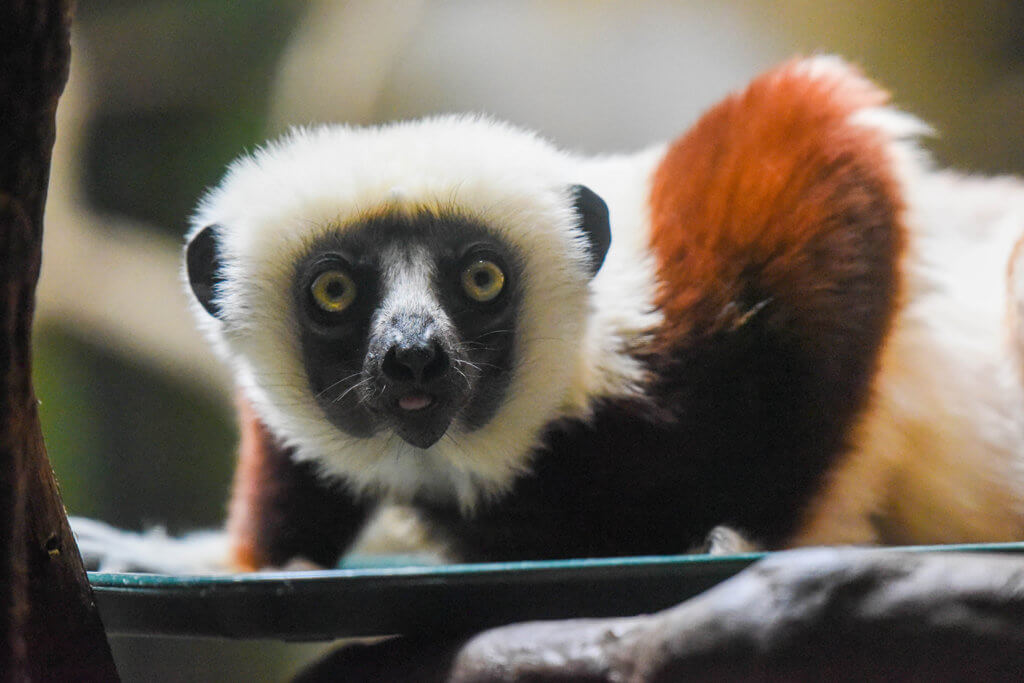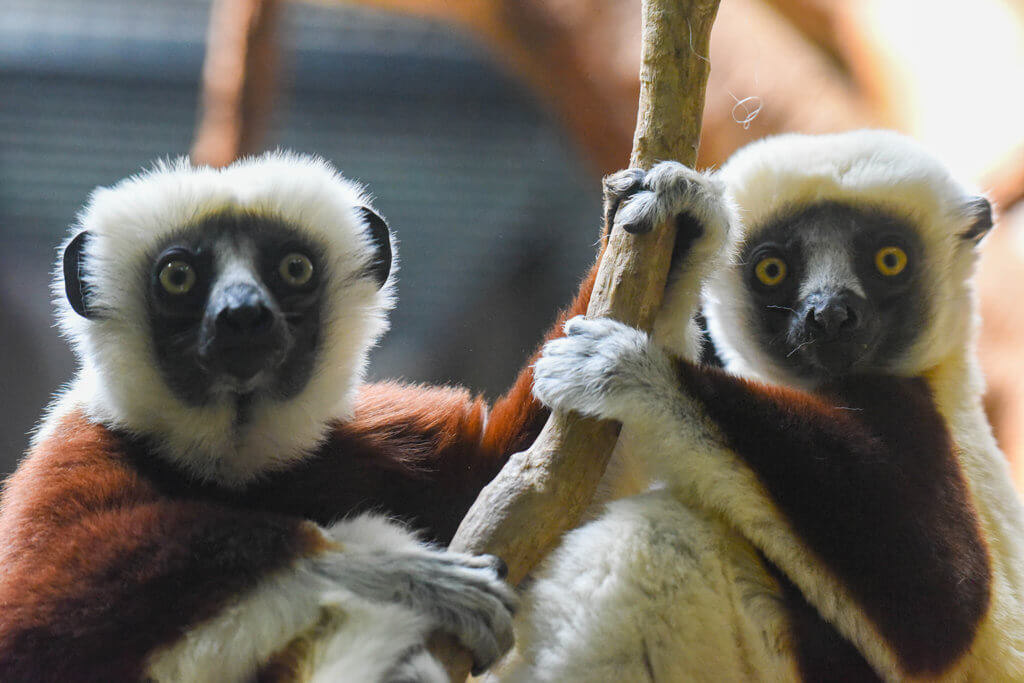Overview
“Where I live”
Coquerel’s sifaka are one of very few species of sifaka. All sifaka are lemurs, and all lemurs are prosimian primates — which, in a nutshell, means primates more primitive than monkeys — that are native only to the island of Madagascar off the southeastern coast of Africa. Coquerel’s sifaka live in the sparse remaining dry, deciduous forests of northwestern Madagascar. They are found on Lemur Lane in the African Journey area of the Maryland Zoo during the summer and in the Chimp Forest during the winter.
“How I live there”
Coquerel’s sifaka spend almost all of their time in the trees. They are diurnal, meaning that they are active during the day and rest at night. They live in social groups of 3 to 10 animals and stay together playing, grooming, feeding, and sleeping. They have a wide range of vocalizations that they use to maintain constant communication with members of their group and others.
Almost half of their waking hours are spent foraging for food. They are strictly vegetarian, and eat mostly leaves (which means that they are primarily folivorous). Their digestive systems are very well adapted to such a high fiber diet. They also eat buds, flowers, bark, dead wood, and some fruit, but in very small quantities compared to leaves. At night, they sleep high in the trees where they are safe from predators.
Lemurs in general differ from other groups of primates in having matriarchal societies. This means that females are dominant to males, and females command the first choice of food and mating partners. While males may change groups several times, females typically stay with the same group throughout their lives. Each group maintains a home range of between 10 and 22 acres (an acre being about the size of a football field), but groups may overlap without significant friction.
“Making my mark”
Sifaka are distinguished from other lemurs by the way that they move. They maintain a very upright posture and, using only their back legs, leap through the treetops. They can easily leap more than 20 feet in a single bound. On the ground, they spring sideways off their back feet to cover distance.
“What eats me”
Hawks and eagles will prey on the young of any lemur species, including Coquerel’s sifaka. The fossa, a weasel-like ground predator native to Madagascar, will take lemurs that it can snatch out of the trees (which is why lemurs are wise to sleep high in the treetops). Humans, however, pose the greatest threat by far to lemurs through hunting and destruction of habitat.
Raising Young
Female Coquerel’s sifaka give birth once a year, in summer, to a single offspring after a gestation period of almost 6 months. The infant clings to its mother’s belly for nearly the first month, and then begins to ride jockey-style on her back for another few months. When the infant reaches the age of about five months, the mother strongly encourages her infant to get off her back. By this time, the infant is able to feed on leaves and other plant food and is almost fully weaned.
Conservation
Coquerel’s sifaka are critically endangered. They are now found in only two protected areas of northwestern Madagascar. Habitat loss due to deforestation is the leading threat to Coquerel’s sifaka, as is the case with many species of lemur.
Taxonomy
- Kingdom: Animalia
- Phylum: Chordata
- Subphylum: Vertebrata
- Class: Mammalia
- Order: Primates
- Family: Indriidae
- Genera: Propithecus
- Species: verreauxi coquereli




